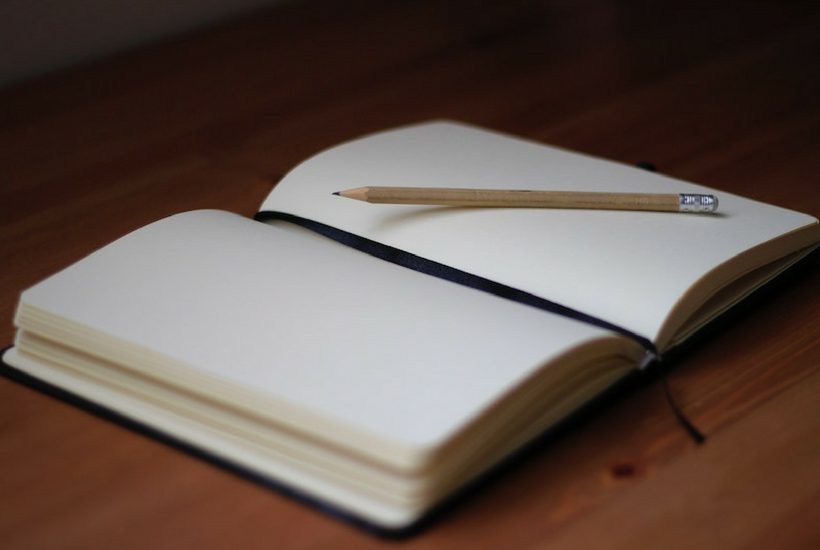In 2015, I discovered the Bullet Journal. I immediately adopted it, and it changed the way I stay organised and productive.
Ryder Carroll, a digital product designer living in Brooklyn, NY, developed the system. It has exploded on the internet, but let’s look at the original Bullet Journal video before we get into that. The video below will give you the best sense of what it is and how to use it.
What is a Bullet Journal?
The Bullet Journal (BuJo) is functional, flexible, and straightforward. Its popularity has grown, and there are now many blogs, YouTube videos, and social media pages, profiles, and groups dedicated to the Bullet Journal.
The most common concerns I see are getting started and feeling overwhelmed by all the doodles. Doodles? What doodles? There aren’t any doodles in that video.
If you Google “bullet journal”, you’ll get image results like this:

Social media is full of images like this, and it gives the impression that the BuJo is a cross between a planner and an art journal. There’s nothing wrong with a beautiful, artistic BuJo. Even though mine will never look like this because I can barely draw a stick figure (and I’m not interested in perfecting my stick figures), I enjoy looking at them. They can inspire new ideas.
Unfortunately, they can also lead beginners to think that the Bullet Journal is complicated and feel overwhelmed. Recently, I saw a Bullet Journal 101 infographic that included the following tips: start with a practice journal, keep it simple and save the embellishments for later, and sketch in pencil first. When you’ve gotten the hang of that, create your “real” Bullet Journal.
No.
Bullet Journal 101 is a notebook, a pen or pencil, and Ryder Carroll’s video.
What goes in a Bullet Journal?
The Bullet Journal has basic elements:
- An index
- A monthly calendar spread (dates on one page and monthly tasks on the other)
- A daily calendar of tasks, events, and notes
- Collections (groups of similar tasks or notes)
That’s it. Pretty simple.
You can add whatever you want to it. Bullet users add yearly and weekly calendars and trackers to log habits, workouts, weight loss, bills, and spending. They add meal planners and cleaning schedules. They add all kinds of lists.
My collections include goals, online purchases I’m waiting for, books I’ve loaned to friends, movies I want to watch, books I want to read, and things I’m grateful for.
People get pretty specific. I’ve seen collections like “Every Horror Movie I’ve Ever Seen” and “My Favourite Episodes of Supernatural “. I’ve seen maps of supermarkets and logs of Sharpie colours. Users practice their handwriting, doodling, and drawing cute foxes. That’s fine if that’s what you want to do. For these folks, the Bullet Journal is a creative and therapeutic medium. If you’re artistic, it might feel counter-intuitive to keep that element out of your journal.
For me, the Bullet Journal is an everyday productivity tool. I use it to capture to-dos, planning, meeting notes, thoughts, and anything that comes to me. My Bullet Journal is functional, and I don’t care if it isn’t beautiful.
How to get started with a Bullet Journal
- Get a notebook that you like enough to look at every day, but not so much that you’d freak out if you messed it up. Since I was a teenager, I’ve loved Moleskine notebooks, and I use a black A5. My first Bullet Journal was a softcover grid. My second was a hardcover grid. For 2017, I’ve purchased a hardcover dotted. Leuchtturm1917 is another popular brand among Bullet Journal users.
- Get a pen you like. I use Artline 200 Fine 0.4 in black. They’re cheap, and I like how they write. Whenever I go to Officeworks, my local office supplies store, I pick up a few.
- Watch Carroll’s video and dive in.
Those are the basics. The rest is up to you.
Some people adopt the Bullet Journal system in other kinds of planners and journals such as the Filofax, Traveller’s Journals, disc-bound planners, composition notebooks, or any cute little journal they like. Some people like using high-quality fountain pens, and others like using a variety of coloured pens and pencils. You might also see the use of stencils, rubber stamps, and washi tape to decorate.
Social media channels are visual platforms, and beautiful, artsy Bullet Journals are photogenic and make for great content. They’re so prolific on social media, they seem to be the norm, but that’s not necessarily true. Don’t be intimated by beautiful journals. The pursuit of perfection is a form of procrastination, and the point of the Bullet Journal is to get things done.

